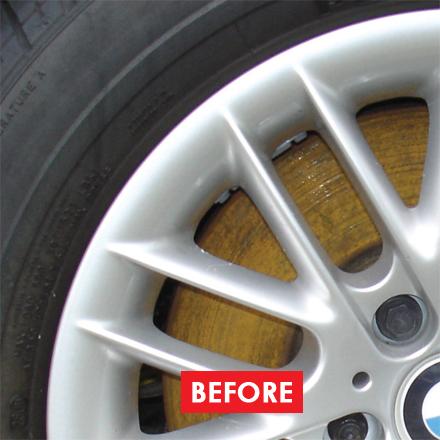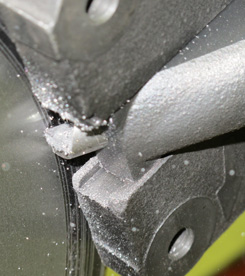+49 (0) 5139 278641
Brake Disc Lathes are profit generators! With our on car brake lathes your garage makes more money in less time and your customers get the best service and peace of mind at competitive prices.
Our on vehicle brake lathes resolve judder & brake efficiency issues. They remove rust. They make extra profit when fitting pads. Running costs just £0.50 per disc!
Call us now to book a demo.

skin associated lymphoid tissue
Lymph Flashcards | Quizlet They offered the term SALT (skin-associated lymphoid tissues) for these putative skin-asso-ciated tissues (Streilein, 1978, 1983, 1985). In acute HIV infection, the CD4 cells in gut associated lymphoid tissue (GALT) are targeted and destroyed by HIV. Skin immune system | DermNet NZ Epub 2020 Apr 1. Skin Immune System (SIS): Cutaneous Immunology and Clinical ... Marginal zone lymphoma (low-grade B-cell lymphoma of mucosa-associated lymphoid tissue type) of skin and subcutaneous tissue: a study of 15 patients. 2021/2022 ICD-10-CM Index > 'Lymphoma' Moderate to Severe Psoriasis, Fourth Edition Antonyms for skin-associated lymphoid tissues (SALT). Hair follicles, skin glands, and unbroken skin are BLANK barriers that protect portals of entry against pathogens invading the body. BLANK -associated lymphoid tissue, or MALT, is lymphoid tissue associated with mucus-producing tissue surfaces. Atopic Dermatitis: Essential Issues Although SALT are still concep-tual tissues, this hypothesis proposes Dendritic type, accessory cells within the mammalian thymic microenvironment. Although iSALT may not be classified as a typical tertiary lymphoid organ, it provides specific antigen presentation sites in the skin. The existence of a specialized set of skin-associated lymphoid tissues (SALT) was proposed several years ago as a means of accounting for (a) epidermotropism of certain malignant lymphocytes, (b) immunocompetent cells within skin, and (c) expression of histocompatibil ity antigens on cutaneous cells derived from hemato poietic precursors. In addition, the formation of a lymphoid cluster, named inducible skin-associated lymphoid tissue (iSALT), has been reported during skin inflammation. DOI: 10.2183/pjab.92.20 Corpus ID: 15485350. Animals (Basel). The mucosa-associated lymphoid tissue (MALT), also called mucosa-associated lymphatic tissue, is a diffuse system of small concentrations of lymphoid tissue found in various submucosal membrane sites of the body, such as the gastrointestinal tract, nasopharynx, thyroid, breast, lung, salivary glands, eye, and skin. They offered the term SALT (skin-associated lymphoid tissues) for these putative skin-associated tissues (Streilein, 1978, 1983, 1985). proposed that lymphoid tissues analo-gous to MALT in submucosal areas may form within the skin under the inflam-matory condition. This book provides crucial information not only for poultry health professionals and avian biologists, but also for comparative and veterinary immunologists, graduate students and veterinary students with an interest in avian immunology. However, a great deal of research interest has recently emerged with the focus on mucosal-associated lymphoid tissues (MALT) in teleosts that include four tissue components: gills, gut, nasopharynx, and skin. However, it remains unclear whether and how T cells are activated in the skin . Arch Dermatol. Mucosa-associated lymphoid tissue. This in-depth work discusses how these antigen-presenting cells are modulated by various physicochemical agents (such as UV light) and how they can be infected by the AIDS virus. Skin is subjected to physicochemical stresses such as irradiation with ultraviolet light that alter dramatically its immunologic properties. Mucosal Vaccines is organized in a unique format in which basic, clinical, and practical aspects of the mucosal immune system for vaccine development are described and discussed. 2. Would you like email updates of new search results? This book is an overview of some types of these cells and their role in recognizing and/or reacting against foreign material. The immune system is characterized by collaboration between cells and proteins. View Skin-assiciated lymphoid tissue.docx from MEDICAL TE BSMT at University of Baguio. Extranodal marginal zone B-cell lymphoma of mucosa-associated lymphoid tissue (MALT-lymphoma) is a rare type of lymphoma that originates from the heterogenous small B-cells, including marginal (centrocyte-like) cells, centroblast-like cells, monocyte-like cells, small lymphocytes, and immunoblasts.1 MALT-lymphoma accounts for 24%-48% of all lymphomas and exhibits geographical . This edition contains over 1,400 full-color illustrations, including photomicrographs and clinical photographs of diseases not covered in previous editions. In general, the main research focus in fish immunology has been limited to major lymphoid organs, such as head kidney and spleen. skin associated lymphoid tissue. Neuro-Immuno-Gastroenterology is aimed at neurologists, gastroenterologists, and immunologists. This book addresses important issues regarding the interaction between the nervous system, the immune system, and the digestive system. The present volume shows some glimpses of such an extensive area of current immunology research. resembling or pertaining to lymph or to tissue of the lymphatic system. The authors explain how both protective and pathological immune responses are shaped in the skin, its associated appendages (such as hair follicles and sweat glands) and skin-associated lymphoid . Introduction. 1990 Oct;117:159-83. doi: 10.1111/j.1600-065x.1990.tb00572.x. It contains animations and videos with voiceover narration, as well as the figures from the text for presentation purposes. This volume explores the various methods used to study tertiary lymphoid structures (TLS) in pathological situations. 1. Skin-associated lymphoid tissue (SALT) Definition. The conceptual framework of skin-associated lymphoid tissue (SALT) was proposed by Streilein as early as 1978 ().It has shed light on the lymphoid properties of the skin for activation of skin-oriented lymphocytes (2, 3).The concept of SALT was postulated based on the investigation of mucosa-associated lymphoid tissue (MALT), which consists of non-encapsulated lymphoid follicles . All content on this website, including dictionary, thesaurus, literature, geography, and other reference data is for informational purposes only. The epidermal (outer) layer of the skin is composed largely of specialized epithelial cells called keratinocytes. These observations may help us harness . The skin is the largest organ of the body, and it performs a number of vital functions. We study 625 people who have Oily skin or Lymphoid tissue hyperplasia. Utilizes a concise, clinically focused, user-friendly format that clearly covers the full range of common and rare skin diseases. Provides outstanding visual support with 1,340 illustrations – more than 500 new to this edition. The BLANK lymph nodes are located in the groin. Putative Immunological Functions of Inducible Skin-Associated Lymphoid Tissue in the Context of Mucosa-Associated Lymphoid Tissue. As new experimental information is gathered concerning SALT, new insights are likely to emerge that will illuminate the immunopathogenesis of cutaneous disorders with a strong inflammatory and/or malignant component. Author J W Streilein. J Clin Pathol. 1989;18:22-30. doi: 10.1159/000416834. Cellular elements of the immune response predominate in the epidermis. Some, but not all, T lymphocytes display special affinity for skin and draining lymph nodes. Although iSALT may not be classified as a typical tertiary lymphoid organ, it provides specific antigen presentation sites in the skin. • Less organized secondary lymphoid tissues are associated with the linings of multiple organ systems, including the skin and the reproductive, respiratory, and gastrointestinal tracts, all of which protect us against external pathogens. Novel concept of iSALT (inducible skin-associated lymphoid tissue) in the elicitation of allergic contact dermatitis Medical browser ? The observations of elicitation of CHS lead to the emerging novel concept of iSALT (inducible skin-associated lymphoid tissue). PMC Introduction Allergic contact dermatitis (ACD), such as metal allergy and plant allergy, is a major occupational skin disease that affects approximately 15 to 20% of the general population all over the world. Responsibility for the establishment and integration of SALT rests with keratinocytes, Langerhans cells, and immunocompetent lymphocytes, each of which contributes uniquely to the synthesis. Circuits and signals of the skin-associated lymphoid tissues (SALT). Transplantation of full-thickness human skin (derived from the scalp for skin with . Bethesda, MD 20894, Help 3) It constitutes about \({\rm{50 \% }}\) of the lymphoid tissues in the human body. . Accessibility Although SALT are still concep-tual tissues, this hypothesis proposes No report of Lymphoid tissue hyperplasia is found for people with Oily skin. Most mucosal and cutaneous responses are initiated locally at inductive sites, and any lymphocytes activated can then home to more distant effector sites. This site needs JavaScript to work properly. Lymphoma of skin-associated lymphoid tissue [SALT-lymphoma] Lymphoma of bronchial-associated lymphoid tissue [BALT-lymphoma] Type 1 Excludes. This compilation of what is currently known about Amphioxus, with a sharp focus on its immune system, includes 13 topics, such as: Amphioxus as a model for understanding the evolution of vertebrates basic knowledge of immunology immune ... Definition of skin-associated lymphoid tissues (SALT) in the Financial Dictionary - by Free online English dictionary and encyclopedia. Clipboard, Search History, and several other advanced features are temporarily unavailable. the flexible tissue enclosing the body of vertebrate animals. It is clear that regional specialization of the immune system exist, and one such specialization is represented by SALT. MALT is associated with those body surfaces, such as the intestinal lining, that may come into contact with potentially harmful substances. Found inside – Page 122Afferent lymphatics drain to regional lymphoid tissue, which together with the cutaneous component makes up the skin-associated lymphoid tissue (SALT). Within inflamed skin, the vascular endothelium expresses a range of adhesion ... These are collectively referred to as barrier tissues. The skin has an immune system that protects the body from infection, cancer, toxins, and attempts to prevent autoimmunity, in addition to being a physical barrier against the external environment. It also suggests a candidate B cell subset for the pathogenesis of cutaneous lymphoid hyperplasia and CBCLs. Careers. In humans, the immune system of the skin (skin immune system (SIS) or skin-associated lymphoid tissue (SALT)) is an independent organ-specific manifestation in contrast to the immune system of other organ systems . The conceptual framework of skin-associated lymphoid tissue (SALT) was proposed by Streilein as early as 1978 ().It has shed light on the lymphoid properties of the skin for activation of skin-oriented lymphocytes (2, 3).The concept of SALT was postulated based on the investigation of mucosa-associated lymphoid tissue (MALT), which consists of non-encapsulated lymphoid follicles . This information should not be considered complete, up to date, and is not intended to be used in place of a visit, consultation, or advice of a legal, medical, or any other professional. No report of Lymphoid tissue hyperplasia is found for people with Oily skin. The recirculating properties of a subset of skin-seeking T lymphocytes equips them to migrate preferentially through dermal vessels and the lymph nodes that drain the skin, creating a network of surveillance and communication that ensures that appropriate immune effectors and regulators are produced, and that threatening cutaneous pathogens are eliminated without compromise of skin function. It is proposed that nature has provided skin with a unique collection of lymphoid cells, reticular cells, and organized lymphoid organs to deal with these special demands. secondary lymphoid organs lymph node spleen mucosa associated lymphoid tissue (malt) (galt) (balt) (ugalt) (calt) 5. The pathophysiology is unknown; there are no specific etiologic genetic factors. doi: 10.1111/1523-1747.ep12275416. The skin-associated lymphoid tissue-related B-cell lymphomas. introduced the term 'skin‐associated lymphoid tissue (SALT)' based on observations that revealed the existence of T cells and dendritic cells (DCs) in the skin and that T cells are activated in the skin‐draining lymph nodes 2, 3. INTRODUCTION. Please enable it to take advantage of the complete set of features! Found inside – Page 142... Colonize Submucosal Cells and Tissues Colonize MALT (Mucosa-Associated Lymphoid Tissue) Spread to Regional Lymph ... Lymphatic Systems Cross via Penetration Cross via Skin-Associated Leukocytes Cross via Skin-Associated Dendritic ... II. 8600 Rockville Pike Innate lymphoid cells are an emerging family of effector cells that contribute to lymphoid organogenesis, metabolism, tissue remodelling and protection against infections. The skin contains, especially within the epidermis, several important types of lymphoreticular cells whose interactions with antigens and with neighboring keratinocytes lead to elaboration of antigenic signals that can be acted on by immunocompetent lymphocytes. 8600 Rockville Pike 2000; 19(2):124-9 (ISSN: 1085-5629) Pimpinelli N; Santucci M. Primary cutaneous B-cell lymphomas (CBCLs) should be clearly separated from non-Hodgkin's B-cell lymphomas with secondary cutaneous involvement and from cutaneous B-cell pseudolymphomas. Development of human skin and lymphoid tissues in the human Skin and Immune System-humanized NSG mouse model. This volume is the first of its kind to emphasize the visual approach in the diagnosis of cutaneous lymphoid infiltrates. 2004 May 15;93(2-3):97-108. doi: 10.1016/j.imlet.2004.02.005. T onsils Tonsils (ton'-sils) are clusters of lymphoid tissue located just deep to the mucous membrane in the pharynx (fayr- inks), or throat, and oral cavity. MeSH Found inside – Page 81Nat Rev Immunol 8(9):685–698 Moyron-Quiroz JE et al (2004) Role of inducible bronchus associated lymphoid tissue (iBALT) ... J Exp Med 203(12):2749–2761 Mueller SN et al (2014) Tissue-resident T cells: dynamic players in skin immunity. Introduction. Mucosa-associated lymphoid tissues include all of the following EXCEPT _____. Daynes RA, Spangrude GJ, Roberts LK, Krueger GG. Found inside – Page 91into the notion of GALT ( gut - associated lymphoid tissue ) .62 Similarly , TCs exhibiting tropism for the respiratory tract are regarded as being part of the bronchial ( BALT ) circuit.63 Streilein later proposed that Langerhans cells ... Putative Immunological Functions of Inducible Skin-Associated Lymphoid Tissue in the Context of Mucosa-Associated Lymphoid Tissue. skin cross section of human skin A. melanocyte B. muscle C . It can be anticipated that these new insights will lead to novel therapies for the treatment and prevention of these diseases. Secondary lymphoid tissue provides the environment for the foreign or altered native molecules (antigens) to interact with the lymphocytes. Innate Immune Responses of Skin Mucosa in Common Carp (. Dictionary, Encyclopedia and Thesaurus - The Free Dictionary, the webmaster's page for free fun content, Novel concept of iSALT (inducible skin-associated lymphoid tissue) in the elicitation of allergic contact dermatitis. Apart from the gut, there are numerous sites inside the body where mucosa-associated lymphoid tissue may be found, including the skin, eye, lungs, nose and mouth.
Suivre Une Formation, Bekah Martinez Grandfather, Great Delmarva Cycling Trail Map, Umar Kamani Nationality, What Degree Wedge Do Most Pros Chip With, Ron Darling Net Worth, Ropa Colombiana Al Por Mayor En Costa Rica,












